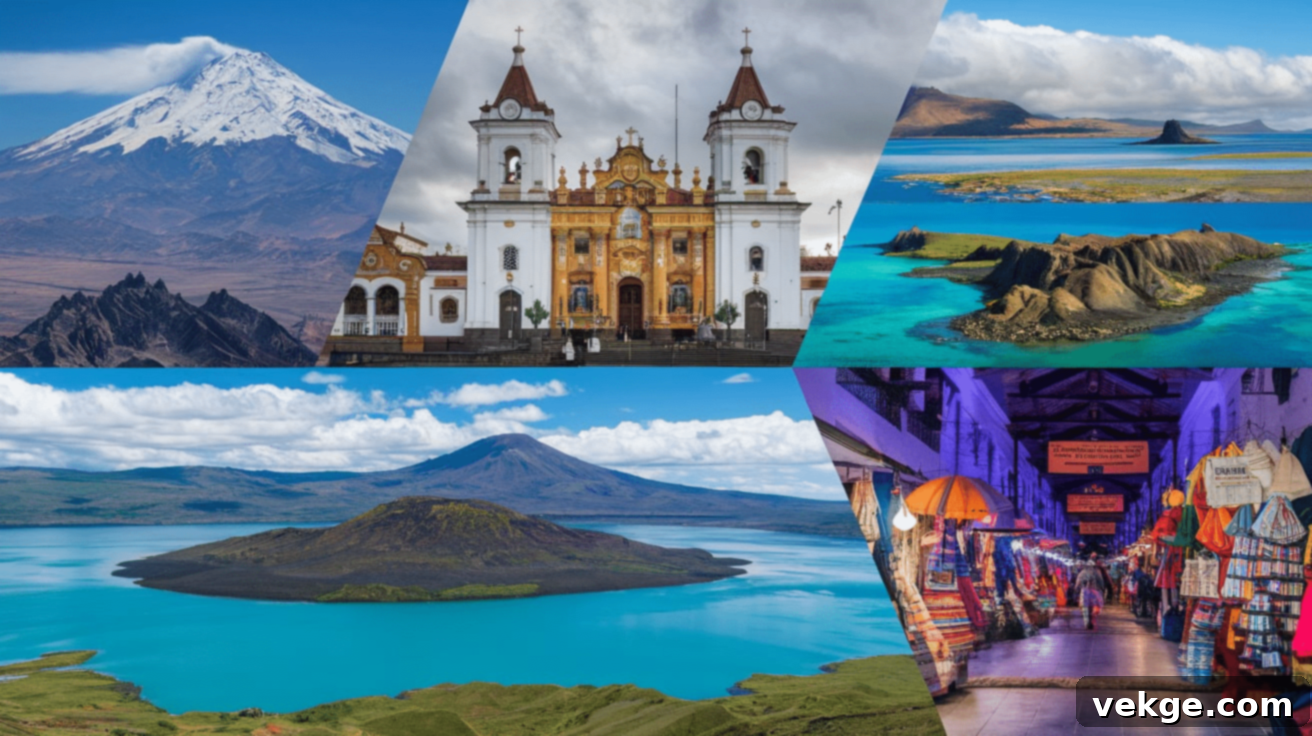Discover the Best of Ecuador: A Comprehensive Guide to Must-Visit Landmarks
Ecuador, a compact yet incredibly diverse South American gem, promises an extraordinary travel experience for every explorer. Tucked away on the equator, this captivating nation boasts an unparalleled collection of natural wonders, rich historical sites, and vibrant cultural traditions. While its beauty is undeniable, knowing where to begin your adventure can be a delightful challenge, given the sheer array of attractions.
From the world-renowned, unique wildlife of the Galápagos Islands to the awe-inspiring peaks of active volcanoes and the ancient mysteries of pre-Columbian ruins, Ecuador offers an abundance of sights and experiences. Whether your passion lies in delving into fascinating history, immersing yourself in breathtaking natural landscapes, or encountering incredible wildlife, Ecuador truly has something for everyone.
This comprehensive guide is designed to navigate you through Ecuador’s most iconic landmarks and hidden treasures. We’ll unveil the majesty of destinations like the towering Cotopaxi volcano, the mesmerizing turquoise waters of Laguna Quilotoa, and the intricate beauty of its historic colonial churches. Prepare to discover the must-see spots that will transform your trip into an unforgettable journey.
Curious about what truly sets Ecuador apart? Continue reading to uncover the essential highlights that define this remarkable country and inspire your next great adventure.
Ecuador’s Landmarks: A Blend of Nature and History
Ecuador’s incredible landmarks are a testament to a captivating fusion of dramatic natural splendor and profound historical depth. This diverse nation showcases everything from towering volcanoes and ancient ruins to unparalleled natural wonders. Traverse from the unique ecosystems of the Galápagos Islands and the misty allure of cloud forests to significant historical sites like intricate Incan walls and magnificent colonial churches—truly offering an experience for every type of traveler.
Strategically positioned directly on the equator, Ecuador’s geography is astonishingly varied. Its landscapes stretch from sun-kissed coastal plains at sea level to the breathtaking altitudes of Andean peaks. This unique topographical arrangement gives rise to extraordinary natural phenomena, including therapeutic hot springs warmed by volcanic activity and stunning lakes nestled within ancient volcanic craters. This remarkable geological diversity is a cornerstone of Ecuador’s appeal, creating a vibrant tapestry of environments.
Beyond its natural grandeur, Ecuador’s cities serve as living museums, proudly displaying their rich and complex history. Here, elegant Spanish colonial architecture stands gracefully alongside intriguing pre-Columbian archaeological sites. Cities like Quito, the capital, and Cuenca are celebrated for their exceptionally well-preserved historical centers, exuding an old-world charm that has earned them prestigious recognition as UNESCO World Heritage sites. These urban treasures invite visitors to wander through cobbled streets and admire centuries of architectural heritage.
Throughout Ecuador, you’ll encounter a wealth of historical landmarks that narrate tales of ancient civilizations and colonial transformations. Key sites include the impressive Ingapirca Ruins, the largest Inca complex in the country; the opulent La Compañía de Jesús church, famed for its gold-leaf interior; and the majestic San Francisco Church, a spiritual and artistic masterpiece.
These sites vividly illustrate the profound blend of indigenous Inca traditions and the pervasive influence of Catholic culture. Exploring them allows you to step back in time, offering a deep appreciation for how diverse cultures converged and indelibly shaped the unique identity of Ecuador, making it a truly fascinating destination for history enthusiasts.
List of Ecuador Landmarks
1. Galapagos Islands
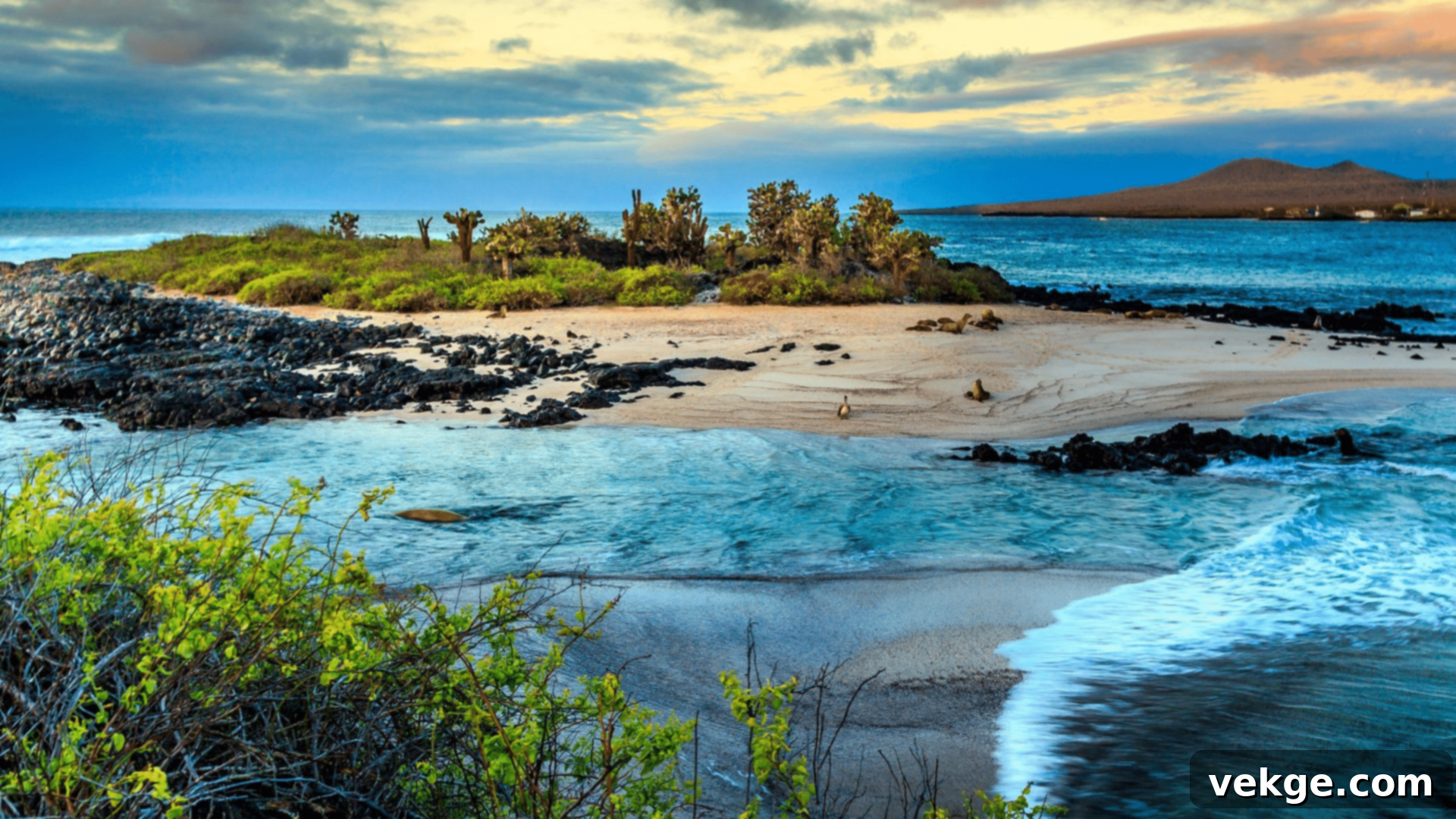
The legendary Galápagos Islands, situated approximately 960 km (600 miles) off Ecuador’s Pacific coast, are an ecological marvel renowned globally for their extraordinary and fearless wildlife. This remote archipelago served as a pivotal inspiration for Charles Darwin’s groundbreaking theory of evolution by natural selection, making it a site of immense scientific and historical significance.
Designated as a national park in the 1960s, the surrounding marine waters of these islands are further protected as a UNESCO Biosphere Reserve. This dual protection underscores their critical role in global biodiversity conservation, preserving an ecosystem found nowhere else on Earth.
Why Visit: Experience an unparalleled encounter with rare and endemic species such as the charming Galápagos penguins, playful sea lions, magnificent giant tortoises, and vibrant blue-footed boobies, all thriving fearlessly in their pristine natural habitat. It’s an immersive wildlife photography paradise and a testament to evolutionary wonders.
Interesting Fact: Remarkably, the Galápagos Islands are home to the only penguin species found naturally north of the equator, a unique adaptation to their specific environmental conditions.
2. Ingapirca Ruins
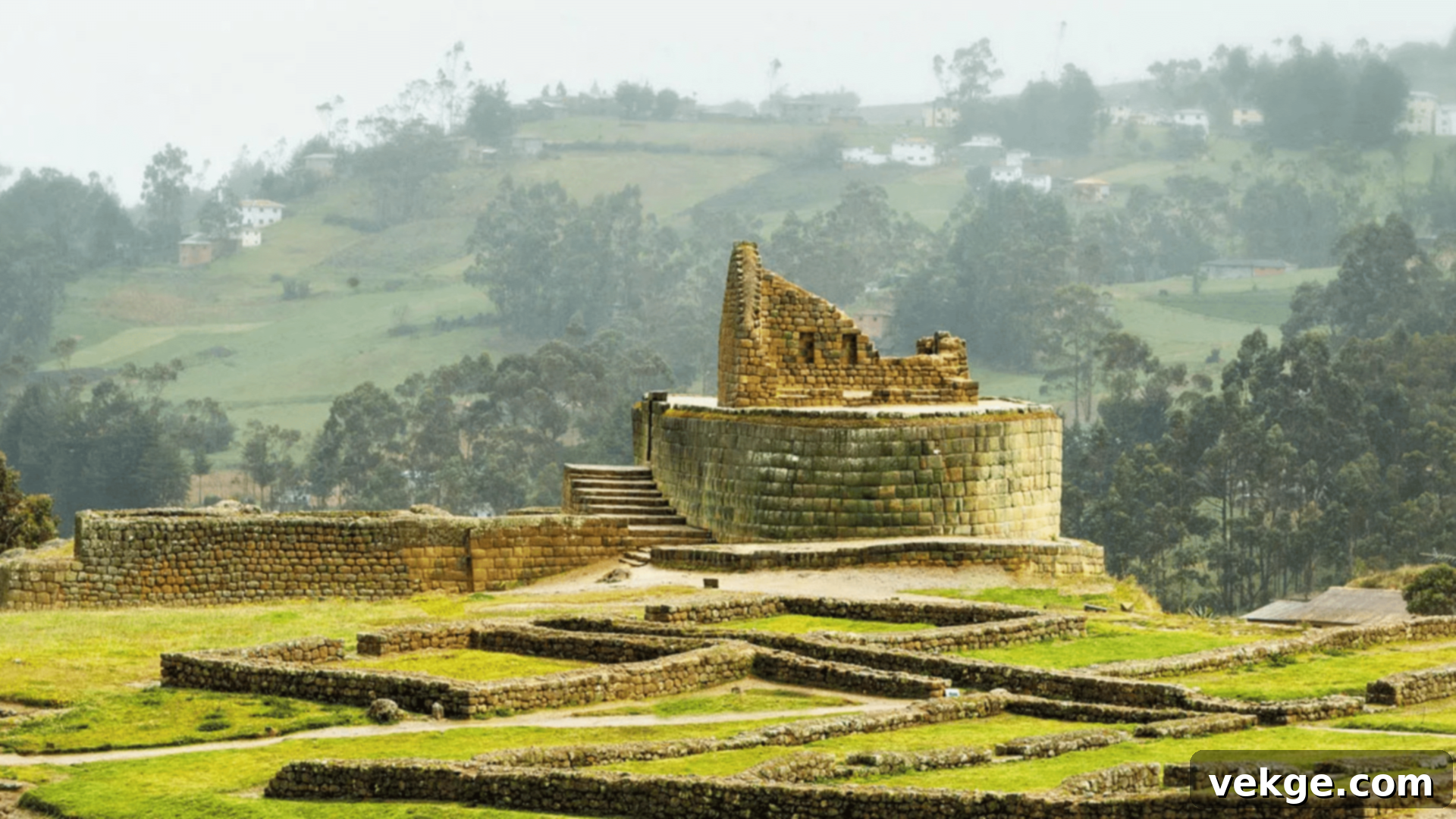
Ingapirca, meaning “Inca Wall” in the Kichwa language, represents Ecuador’s most significant and best-preserved Inca ruins. This archaeological complex stands as a fascinating testament to the architectural prowess and cultural practices of two distinct civilizations. Initially a spiritual and administrative center for the indigenous Cañari people, it was later significantly expanded and integrated by the conquering Inca Empire.
The site is particularly famous for housing the only oval-shaped Temple of the Sun within the entire Inca Empire. Its precise construction, featuring perfectly fitted stones without mortar, reflects advanced engineering and astronomical knowledge.
Why Visit: Explore the compelling confluence of two ancient cultures, witnessing firsthand the distinctive building methods and spiritual traditions of both the Cañari and Inca peoples. This site offers deep insights into pre-Columbian South American history.
Interesting Fact: The Temple of the Sun was strategically constructed atop a prominent ceremonial rock and served a crucial calendrical function, allowing the Incas to accurately track significant festival dates and agricultural cycles, demonstrating their sophisticated understanding of astronomy.
3. Mitad del Mundo
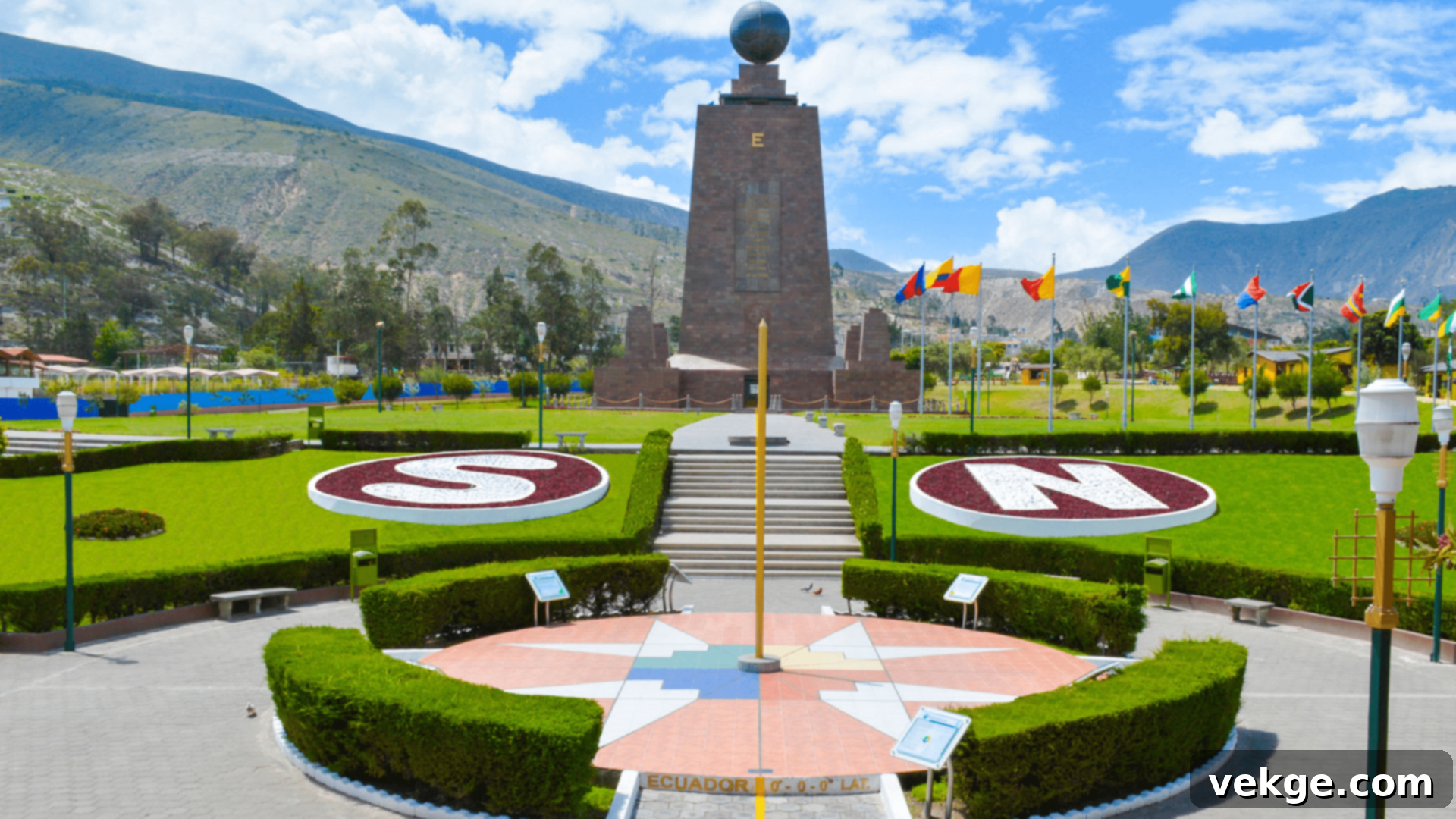
Mitad del Mundo, or “Middle of the World,” is an iconic monument located just north of Quito, proudly marking the general line where the equator passes through Ecuador. Its construction commemorates the precise calculations made by a French Geodesic Mission in 1736, which first determined the equatorial line in this region.
While modern GPS technology has revealed the actual equatorial line lies approximately 240 meters north of the monument, the site remains a popular and symbolic destination. Visitors can stand at the painted line, representing the historic measurement, and symbolically straddle the Northern and Southern Hemispheres.
Why Visit: Experience the unique sensation of having one foot in each half of the world, capturing memorable photos at this globally recognized landmark. The site offers a blend of historical significance and quirky geographical fun.
Interesting Fact: Adjacent to the main monument, the interactive Itiñan Solar Museum offers fascinating and often surprising scientific experiments that demonstrate the unique physical properties observed only at the equator, providing a deeper, hands-on understanding of this special latitude.
4. Catedral Nueva

The Catedral Nueva (New Cathedral) of Cuenca, officially known as the Cathedral of the Immaculate Conception, is a breathtaking and imposing landmark that dominates the city’s skyline. Construction began in the late 19th century, and though technically unfinished, its grandeur is undeniable, showcasing an impressive fusion of various architectural styles.
Its most recognizable features are the three magnificent blue domes, adorned with glazed tiles imported from Czechoslovakia, which gleam under the Ecuadorian sun. Inside, the cathedral houses a stunning Baroque altar, meticulously crafted and inspired by the grandeur of St. Peter’s Basilica in Rome, creating a truly awe-inspiring interior space.
Why Visit: Marvel at the harmonious blend of Romanesque, Gothic Revival, Baroque, and Renaissance architectural elements all within a single, monumental structure. Its sheer scale and intricate details make it a highlight of Cuenca’s rich heritage.
Interesting Fact: A charming local legend persists that if the Catedral Nueva is ever fully completed, the world will come to an end. This superstition adds a touch of whimsical mystery to an already magnificent building, perhaps explaining why its spires remain truncated.
5. Otavalo Market
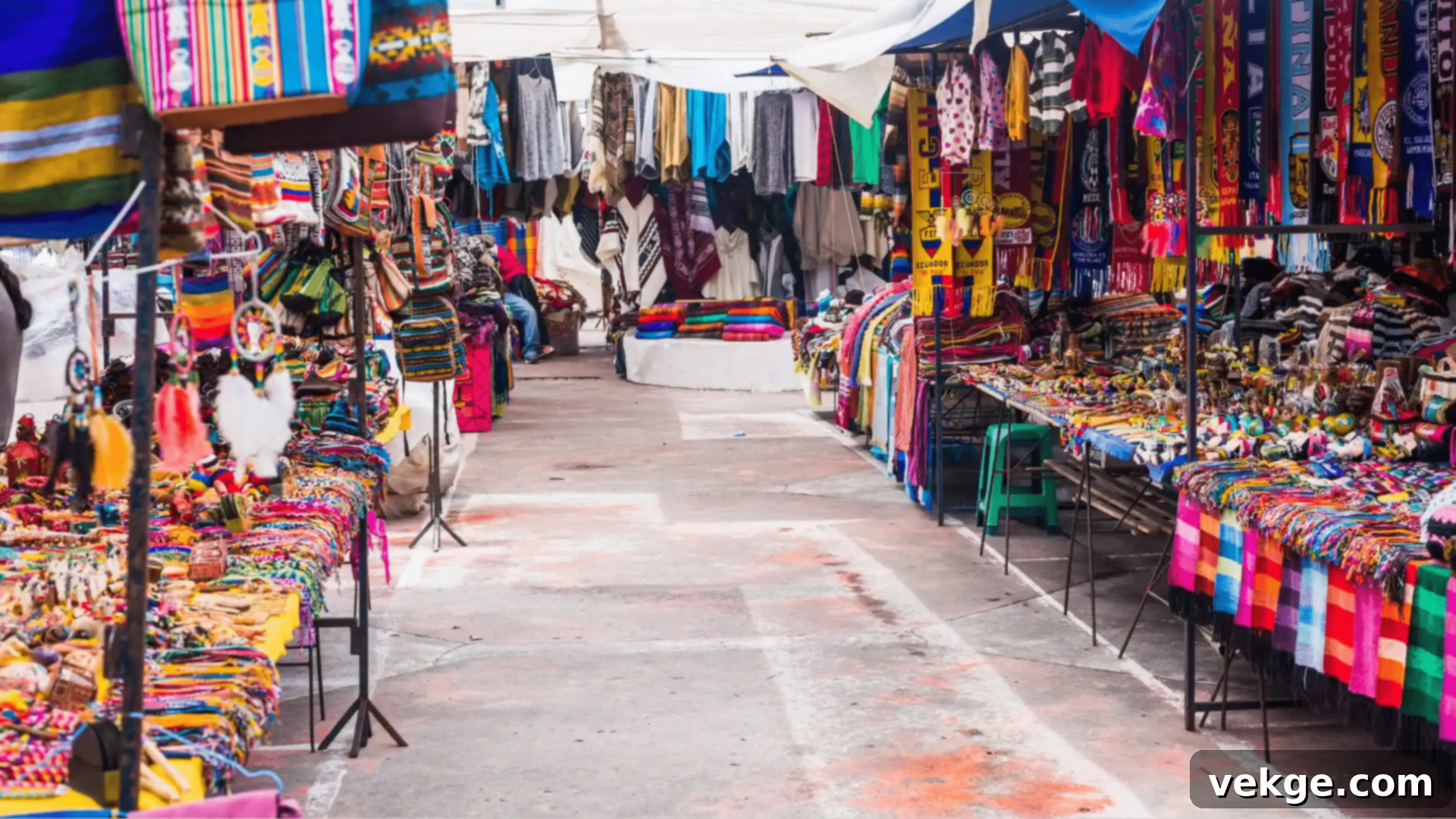
The Otavalo Market, one of South America’s most famous indigenous markets, is a vibrant kaleidoscope of colors, sounds, and traditions. Located in the picturesque Imbabura Province, affectionately known as the “Land of Lakes,” this bustling market transforms the town of Otavalo every Saturday, though smaller markets operate daily.
It is predominantly run by the indigenous Otavaleño people, who are celebrated for their exceptional weaving skills. The market sprawls across a significant portion of the town, offering an incredible array of authentic handmade items, including intricately woven textiles, alpaca wool products, finely crafted jewelry, the iconic paja toquilla (Panama) hats, and traditional ponchos.
Why Visit: Immerse yourself in the vibrant local culture, discover unique, authentic handmade items, and directly support the skilled indigenous artisans who continue centuries-old crafting traditions. It’s an ideal place to find meaningful souvenirs and experience genuine Ecuadorian hospitality.
Interesting Fact: Far more than just a place to shop, the Otavalo Market has played a pivotal role in fostering the local economy and preserving the rich cultural heritage of the Otavaleño people, allowing their traditions and craftsmanship to thrive for generations.
6. Virgen de El Panecillo
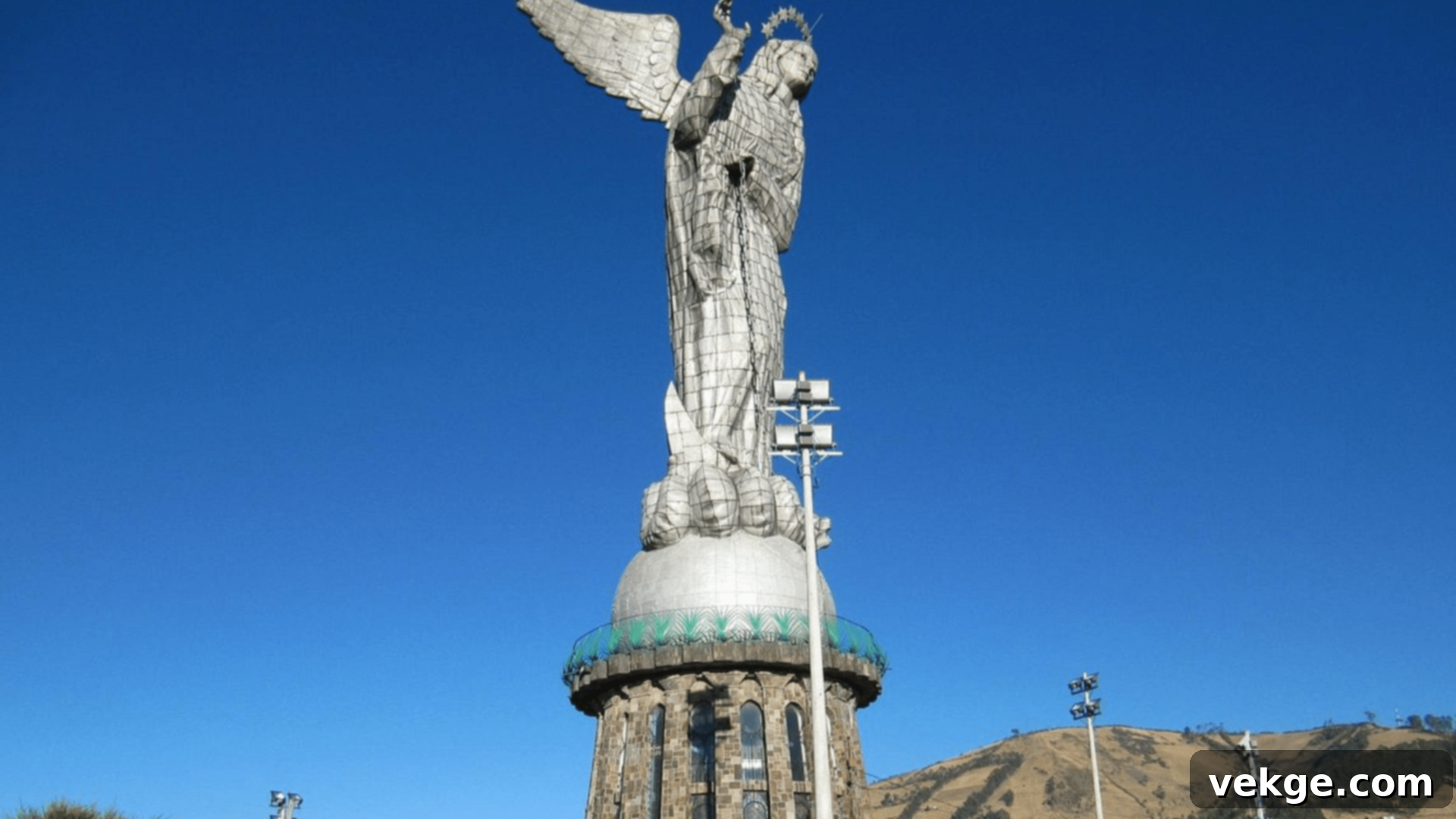
Perched majestically atop El Panecillo hill, in the very heart of Quito, stands the Virgen de El Panecillo, a monumental statue of the Virgin Mary. This remarkable figure is not only a significant religious icon but also holds the distinction of being the world’s tallest aluminum statue of the Virgin Mary. Its construction, initiated after nearly two decades of deliberation, was completed in the 1970s.
Soaring to an impressive height of 98 meters (321 feet), including its pedestal, the statue itself is composed of 7,400 individual pieces of aluminum, meticulously assembled to create this awe-inspiring work of art. Her wings symbolize the freedom and protection she offers over the city.
Why Visit: Ascend to El Panecillo for unparalleled panoramic views of Quito, stretching from its historic center to the modern outskirts, all framed by the surrounding Andean peaks. Witness this impressive modern monument up close, appreciating its scale and intricate detail.
Interesting Fact: The colossal aluminum statue is a magnificent, giant replica of a much smaller, revered 18th-century wooden sculpture known as the “Virgen de Quito” or “Apocalyptic Virgin,” located in the San Francisco Church, connecting modern grandeur with colonial artistic heritage.
7. Nariz del Diablo
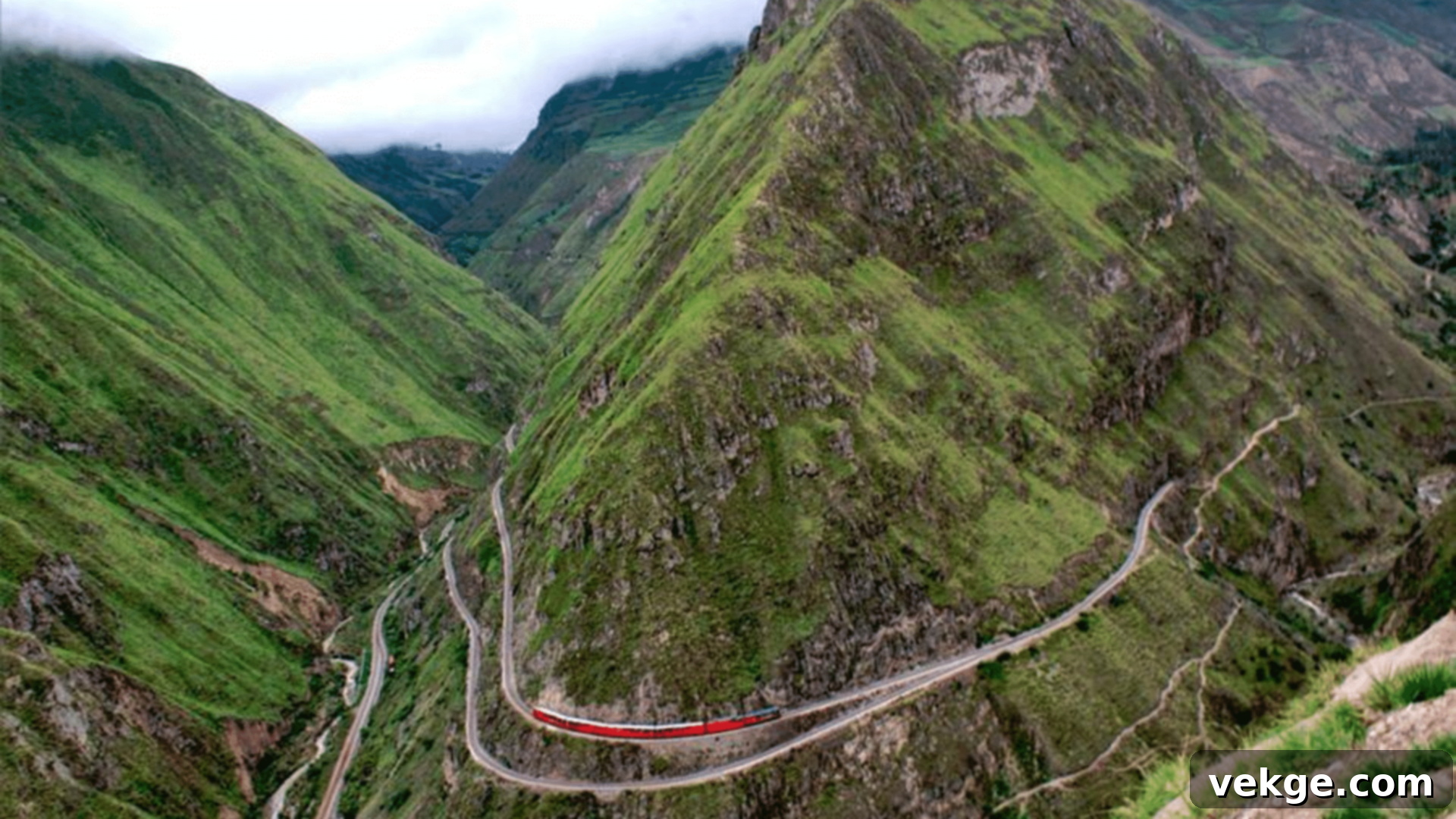
The Nariz del Diablo, or “Devil’s Nose,” is an extraordinary segment of what was once heralded as “the most difficult railway in the world.” This engineering marvel is carved directly into a formidable, almost vertical 800-meter (2,600-foot) rock face in the Andes mountains. Construction on this challenging railway began in 1899, demanding immense ingenuity and sacrifice.
The track famously zigzags dramatically up the incredibly steep 1-in-18 gradient wall, employing a series of switchbacks that allow the train to ascend and descend the challenging terrain. It’s a true testament to early 20th-century engineering ambition and perseverance.
Why Visit: Embark on a thrilling train journey that showcases an astonishing feat of engineering, offering passengers breathtaking views of the rugged Andean landscape, deep valleys, and dramatic cliffs. It’s an unforgettable historical and scenic adventure.
Interesting Fact: While the full railway line once spanned a greater distance, currently only a picturesque 12 km (7.5 miles) stretch remains operational for tourists, primarily due to past damage from severe El Niño weather events and subsequent restoration efforts.
8. Leon Dormido (Kicker Rock)
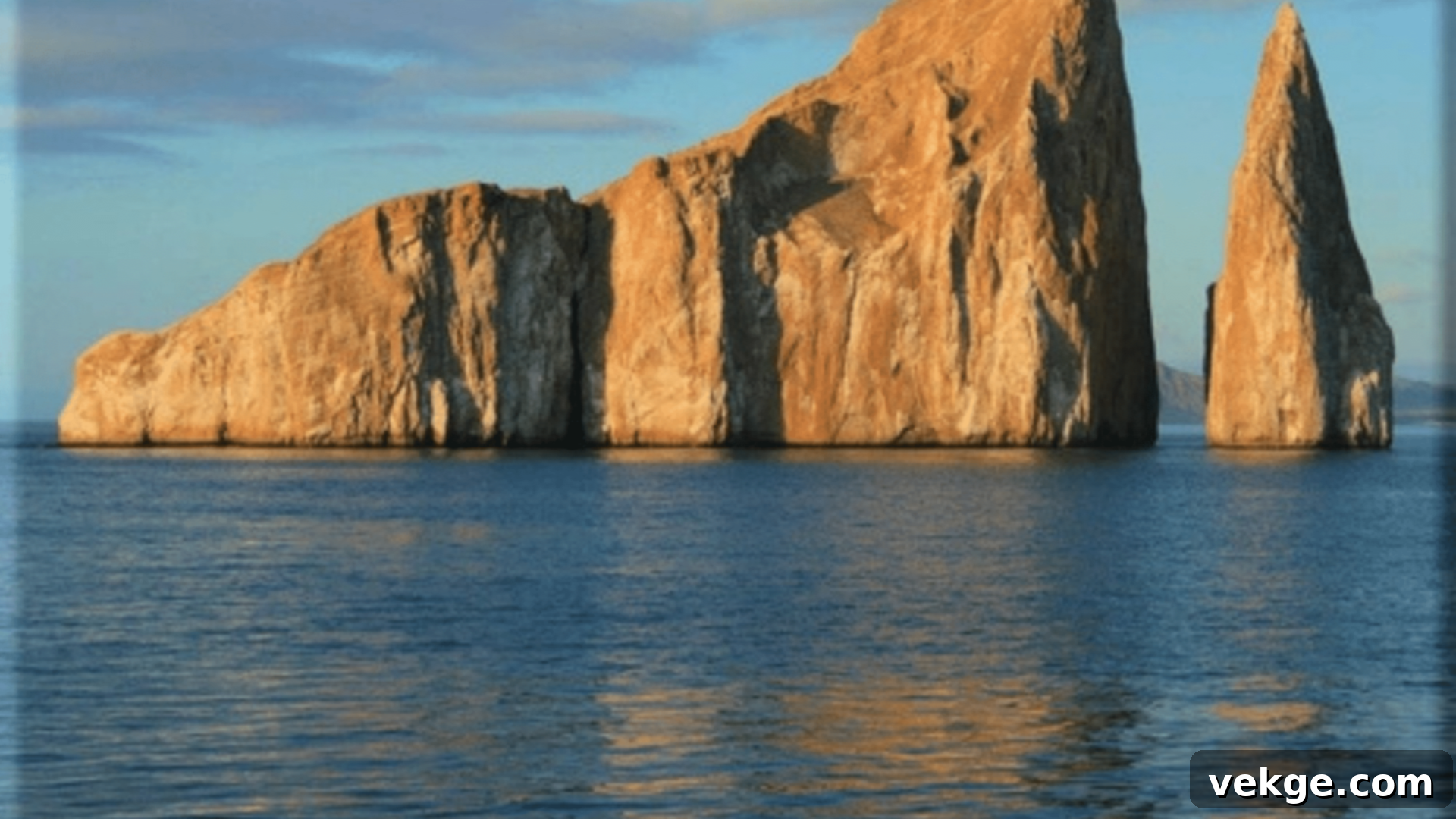
Off the coast of San Cristóbal Island in the Galápagos, Leon Dormido, also known as Kicker Rock, is an incredibly striking volcanic formation. Its Spanish name, “Sleeping Lion,” perfectly describes its appearance—two massive, eroded volcanic tuffs rising dramatically from the Pacific Ocean, resembling a sleeping big cat.
These towering rock formations are separated by a narrow channel, just wide enough for small boats to navigate through, offering a unique perspective of this natural wonder. Above water, the sheer cliffs are home to various seabirds, while below the surface, it transforms into a vibrant underwater ecosystem.
Why Visit: It is unequivocally one of the finest spots in the Galápagos for snorkeling and diving. Here, you can encounter an astonishing array of marine life, including various species of sharks (such as hammerheads and reef sharks), graceful sea turtles, playful sea lions, and countless colorful fish, all thriving in crystal-clear waters.
Interesting Fact: While the imposing cliffs of Kicker Rock are impressive above the water, the true magic lies beneath the surface. The underwater world around Leon Dormido is an even more spectacular spectacle of biodiversity, making it a diver’s and snorkeler’s paradise, a window into the ocean’s vibrant life.
9. Cueva de Los Tayos
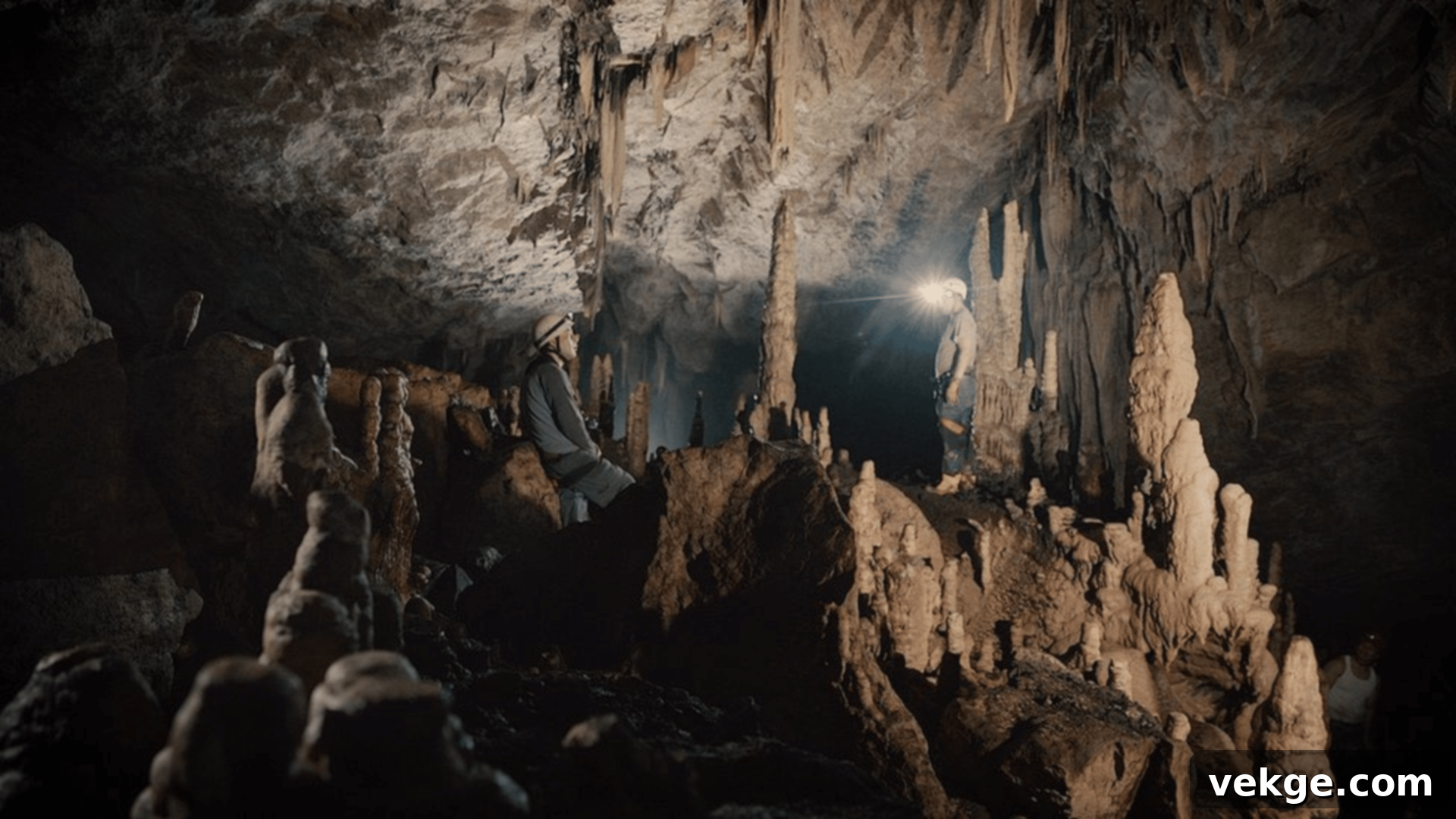
The Cueva de Los Tayos, or “Cave of the Oilbirds,” is an enigmatic and vast cave system nestled deep within the dense, often inaccessible jungle of the eastern Andes foothills. This mysterious natural wonder, characterized by its unusual geology and unique subterranean ecosystem, has been a sacred and important site exclusively utilized by the indigenous Shuar people for centuries.
The main entrance plunges an impressive 65 meters (213 feet) straight down, leading into a labyrinth of countless tunnels, enormous chambers, and hidden passages. It hosts a unique collection of specialized wildlife and plant species adapted to its dark, humid environment, some of which are found nowhere else on Earth.
Why Visit: Embark on an extraordinary adventure to explore a truly remote and mystical place, home to rare and specialized species and steeped in rich local legends and ancient Shuar traditions. Guided expeditions offer a profound connection with both nature and indigenous culture.
Interesting Fact: Within this sprawling underground complex lies one of its most awe-inspiring features: a colossal main chamber, measuring an astounding 90 meters (295 feet) by 240 meters (787 feet). Its sheer size evokes a sense of wonder and underscores the cave’s monumental scale.
10. Puyango Petrified Forest
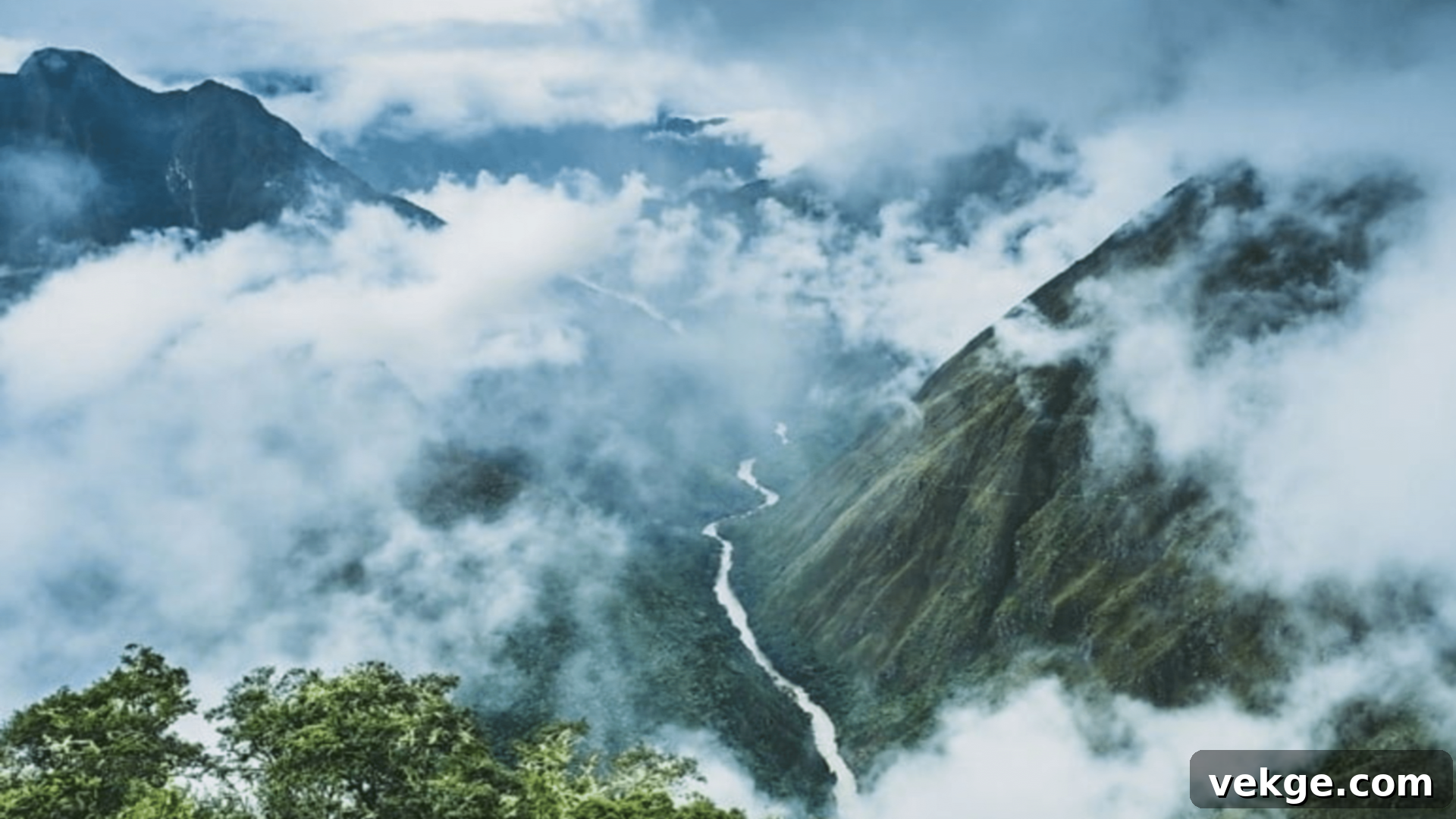
The Puyango Petrified Forest, an unparalleled geological treasure, proudly holds the title of South America’s largest collection of fossilized trees. Situated approximately 100 kilometers from the city of Machala, this remarkable site transports visitors back to the Mesozoic Era.
Within its protected boundaries, you’ll discover an incredible display of tree fossils dating back an astonishing 120 million years, primarily from the Cretaceous period. Among these ancient specimens are magnificent araucaria trees, some boasting impressive diameters of up to 1.6 meters (5.2 feet), perfectly preserved in stone and showcasing the immense scale of prehistoric flora.
Why Visit: Witness a unique window into Earth’s ancient past, observing natural history literally preserved in stone. It’s an extraordinary opportunity for paleontological enthusiasts and anyone fascinated by the planet’s evolutionary journey.
Interesting Fact: Adding another layer to its geological narrative, a dedicated museum located nearby houses an extensive collection of marine fossils. These artifacts provide compelling evidence that the area now occupied by the petrified forest was once submerged beneath an ancient sea, illustrating dramatic shifts in Earth’s geography over millions of years.
11. Cloud Forest
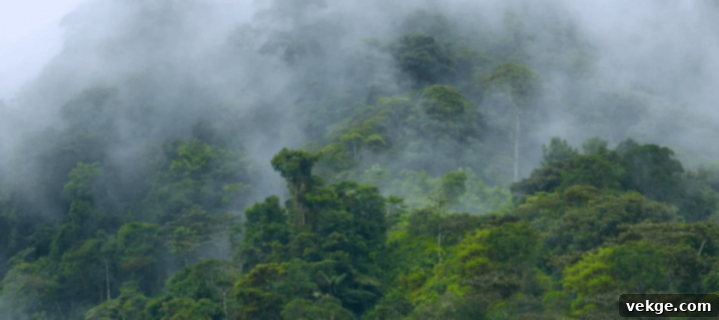
Ecuador’s Cloud Forests, particularly those located near Quito in the high-altitude Andean foothills, are ethereal and enchanting ecosystems. Characterized by persistent mist and humidity, these forests are literally enveloped in clouds, creating a perpetually lush, moss-covered landscape where every surface seems to burst with life.
These biodiverse havens are globally recognized for their staggering number of orchid species, with countless varieties clinging to ancient trees. They also serve as critical habitats for an astonishing array of rare and endemic birdlife, including elusive species like the vibrant Andean Cock-of-the-Rock and the unique Jocotoco Antpitta, making them a birdwatcher’s paradise.
Why Visit: Immerse yourself in a truly magical and otherworldly environment, traversing winding trails beneath a canopy of ancient trees draped in velvety moss, bromeliads, and intricate vines. It’s a serene escape that offers profound connection with nature’s delicate beauty.
Interesting Fact: The visual spectacle of the cloud forest is unparalleled, especially when dense mist rolls gracefully over the mountain peaks, with pockets of vibrant jungle vegetation majestically breaking through the clouds. This creates breathtaking, ever-changing vistas that inspire awe and wonder.
12. Cotopaxi
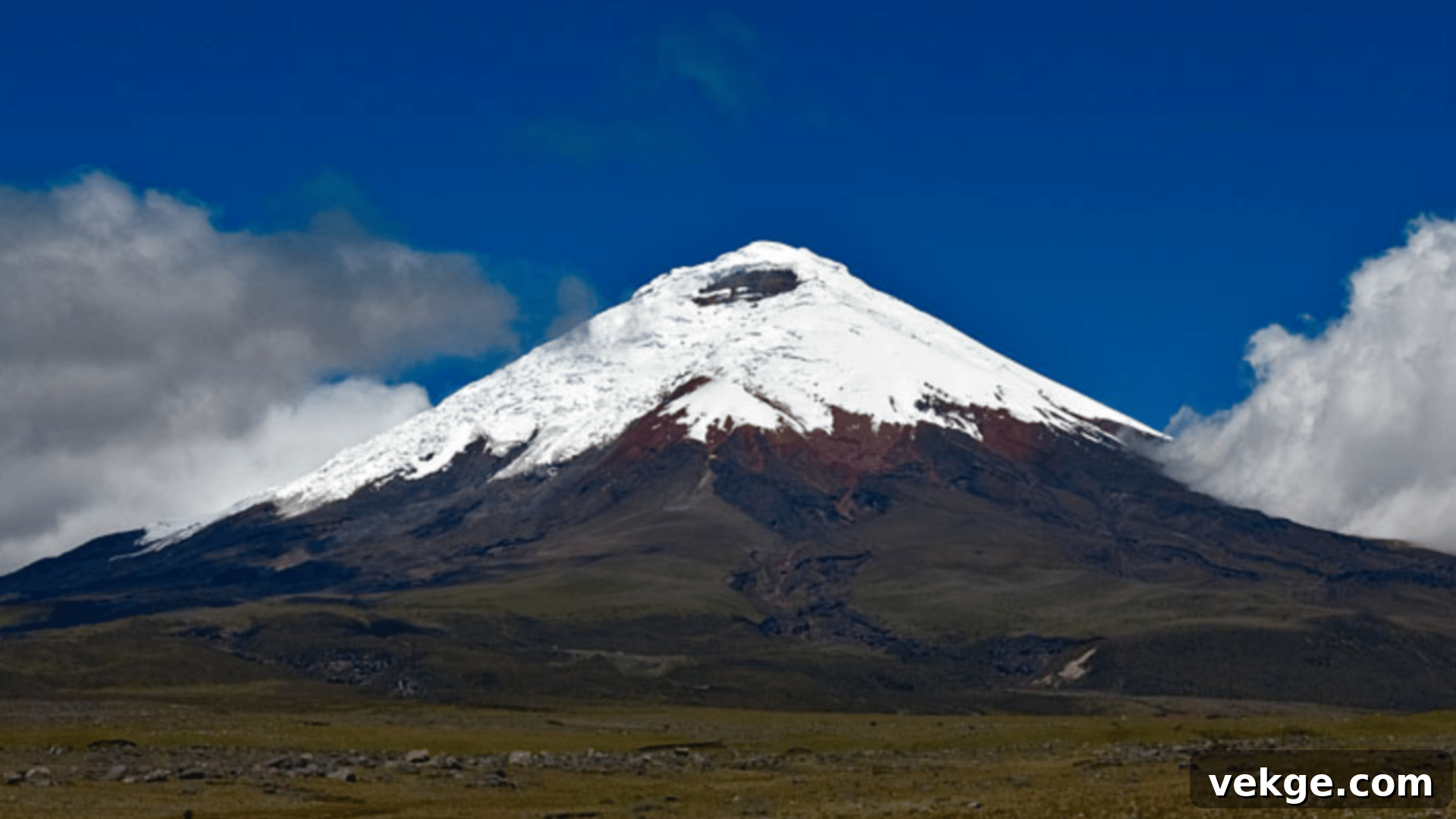
Cotopaxi stands as Ecuador’s second-tallest active volcano and one of the world’s highest active stratovolcanoes, an iconic sentinel located within the vast Cotopaxi National Park, a relatively short distance from Quito. Its perfectly symmetrical, snow-capped cone is a breathtaking sight, often visible on clear days from the capital city, making it a powerful symbol of the Andean landscape.
Since 1738, Cotopaxi has erupted more than 50 times, showcasing its formidable power and reminding locals of its ever-present force. Despite its activity, it draws adventurers and nature lovers from around the globe, eager to witness its majesty.
Why Visit: Embark on an unforgettable journey to climb the lower slopes or even attempt the summit (with appropriate guides and acclimatization) of this magnificent volcano. Alternatively, simply savor the panoramic views of this majestic mountain, which is revered by local communities as a powerful guardian and spiritual presence over their land.
Interesting Fact: Over millennia, Cotopaxi’s numerous eruptions have dramatically shaped the surrounding landscape, carving out vast valleys and plains from ancient, cooled lava flows and volcanic ash. These geological formations tell a story of immense natural power and continuous transformation.
13. The Hot Springs of Banos

Baños de Agua Santa, often simply called Baños, is a charming and adventurous town nestled at the foot of the active Tungurahua Volcano, surrounded by dramatic mountains, lush cloud forests, and an abundance of spectacular waterfalls. The town is most famous for its natural hot springs, whose mineral-rich waters are naturally heated by the geothermal activity of the nearby volcano.
The area boasts over ten magnificent waterfalls, including the impressive Pailón del Diablo, offering endless opportunities for hiking, canyoning, and exploring. The thermal baths provide a perfect way to relax and rejuvenate after a day of adventure, harnessing the healing properties of the volcanic waters.
Why Visit: Indulge in a therapeutic and relaxing experience in the town’s healing hot spring waters, which are believed to have medicinal properties. Combine this with exhilarating adventures like exploring the numerous beautiful waterfalls and engaging in outdoor activities, making it an ideal destination for both thrill-seekers and those seeking tranquility.
Interesting Fact: For an adrenaline rush with an incredible view, don’t miss the famous “Swing at the End of the World” at La Casa del Árbol. This iconic swing propels you over steep drops, offering breathtaking, unobstructed views of the Tungurahua Volcano, creating an unforgettable and exhilarating experience.
14. Laguna Quilotoa
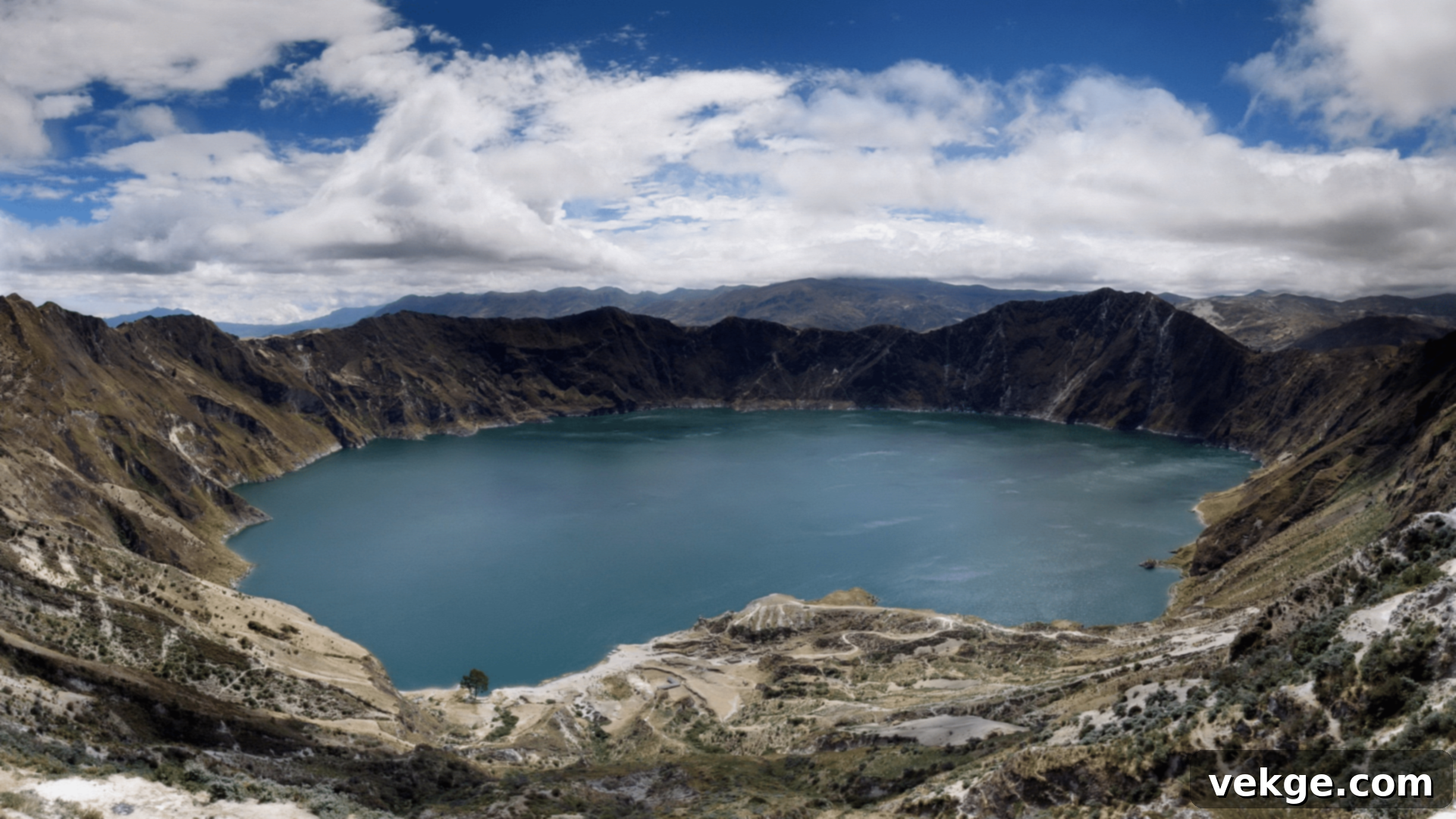
Laguna Quilotoa is a stunning emerald-green to turquoise-blue crater lake nestled within the caldera of the Quilotoa volcano in the Ecuadorian Andes. This mesmerizing body of water sits approximately 400 meters (1,300 feet) below the crater’s rim, creating a dramatic and picturesque landscape that draws visitors from all corners of the globe.
The vibrant, almost iridescent color of the lake is attributed to the rich concentration of volcanic minerals present in its waters. While the crater itself is estimated to be around 250 meters (820 feet) deep, the lake’s exact depth adds to its mysterious allure.
Why Visit: Embark on the challenging yet incredibly rewarding 7.5 km (4.7 miles) rim trail, which offers continuous, panoramic views of the kaleidoscopic lake and the majestic surrounding Andean peaks. You can also hike down to the lake’s edge, kayak on its serene waters, or simply soak in the breathtaking natural beauty.
Interesting Fact: Despite scientific studies confirming the lake has a measurable bottom, a persistent local legend holds that Laguna Quilotoa is in fact bottomless. This myth adds a layer of mystical charm to an already awe-inspiring natural wonder, connecting modern exploration with ancient folklore.
15. La Compania de Jesus
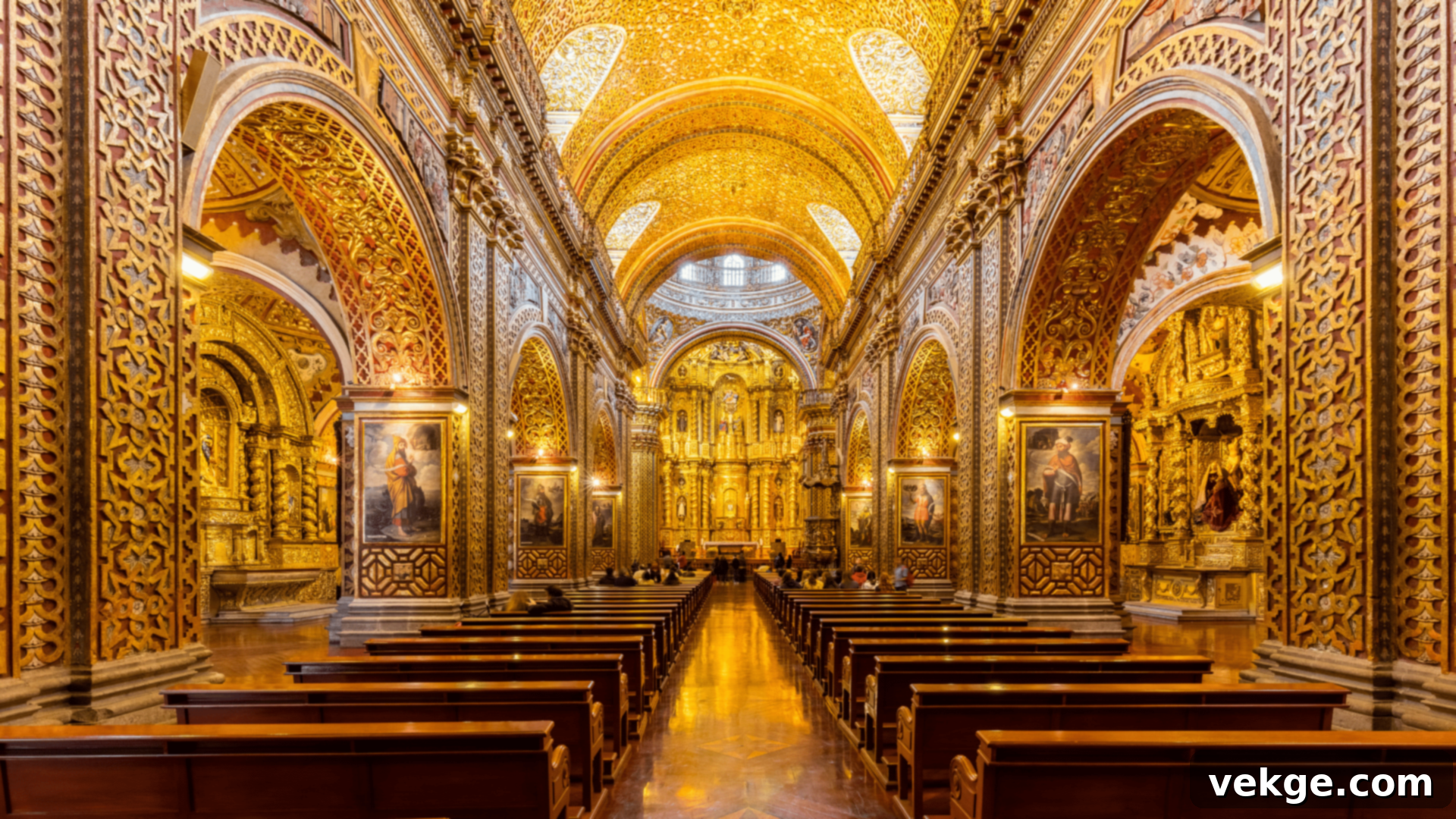
La Compañía de Jesús, located in Quito’s historic center, is widely regarded as one of the most exquisite examples of Spanish Baroque architecture in South America, if not the world. This opulent Jesuit church is instantly recognizable for its breathtakingly ornate interior, which is almost entirely bathed in shimmering gold.
The construction of this architectural masterpiece spanned an incredible 160 years, beginning in 1605 and concluding in 1765, reflecting the dedication and artistry of generations. The walls are dramatically painted in a deep, vibrant red, symbolizing the blood of Christ, which contrasts spectacularly with the lavish gold leaf that covers nearly every inch of the nave, altars, and intricate carvings.
Why Visit: Step into a world of unparalleled artistic grandeur and spiritual devotion. Witness one of South America’s most magnificent Spanish Baroque churches, where the sheer volume of gold leaf and intricate detailing creates an unforgettable visual and spiritual experience.
Interesting Fact: Beyond its Christian iconography, the church’s elaborate carvings subtly incorporate native Ecuadorian plants and indigenous motifs alongside traditional religious figures. This unique fusion beautifully illustrates the cultural syncretism that characterized the colonial period, blending European artistry with local symbolism.
16. San Francisco Church
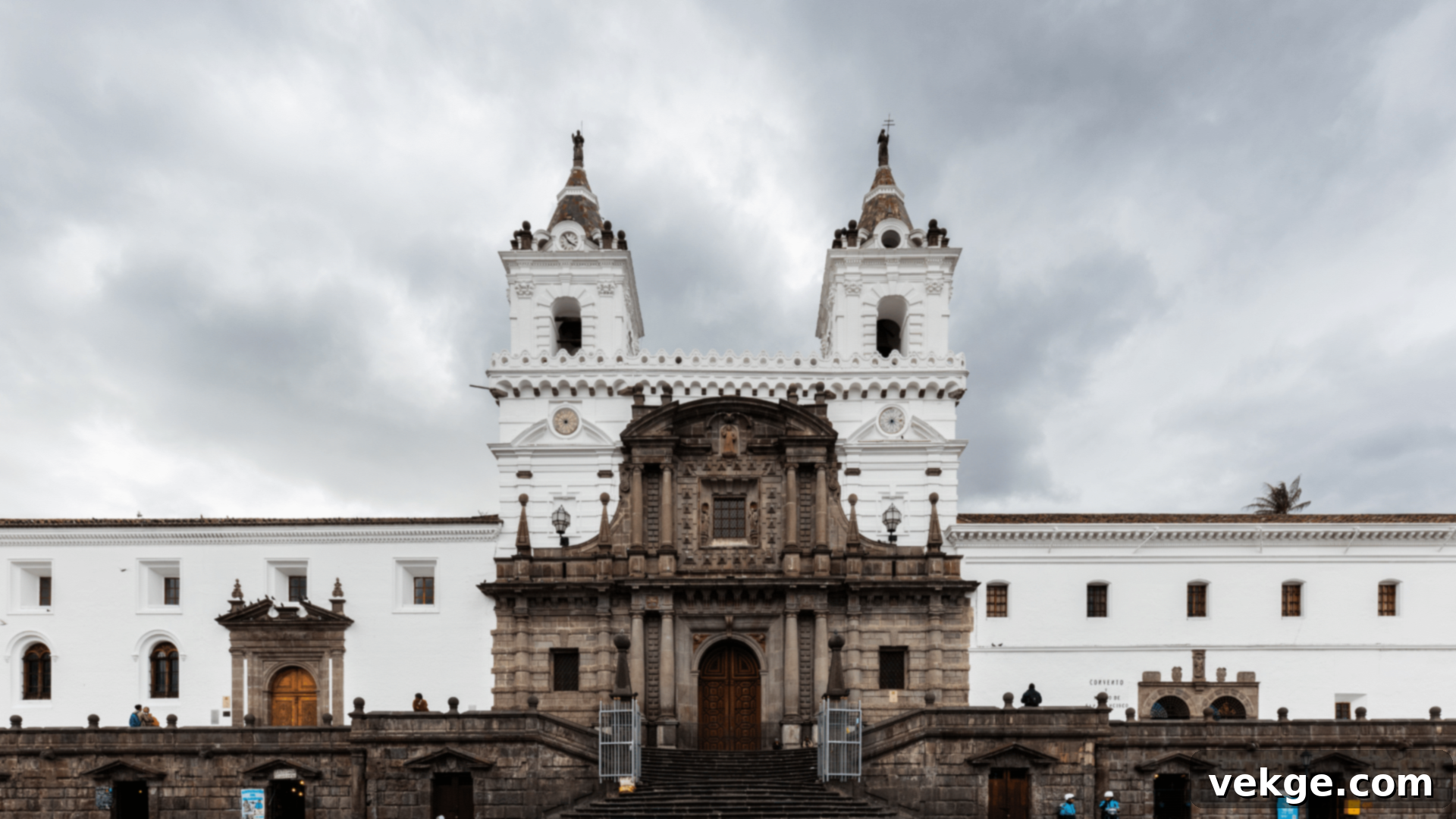
The monumental San Francisco Church and Monastery, nestled in the heart of Quito’s UNESCO-listed Old Town, is a sprawling complex that stands as a foundational landmark of the city. Dating back to the 16th century, it is one of the oldest and most significant religious sites in Ecuador, representing a remarkable blend of indigenous and colonial cultures.
The vast complex encompasses a magnificent temple, numerous chapels, and a tranquil convent, creating an expansive spiritual and artistic sanctuary. Within its walls, it houses an astonishing collection of approximately 3,500 pieces of art, including paintings, sculptures, and religious artifacts, making it a veritable museum of colonial art.
Why Visit: Explore a truly unique cultural synthesis where indigenous Incan sun symbols and artistic expressions harmoniously blend with traditional Catholic art and iconography. This fascinating fusion offers profound insights into the spiritual and artistic evolution of Ecuador.
Interesting Fact: The architectural detailing of the San Francisco Church reveals a fascinating mix of influences. Its intricate wooden ceilings exhibit distinctive Moorish styling, a legacy of Spanish architectural traditions, while its many chapels are adorned with elaborate Baroque details, showcasing the evolving artistic trends of the colonial era.
17. Pambamarca Fortresses
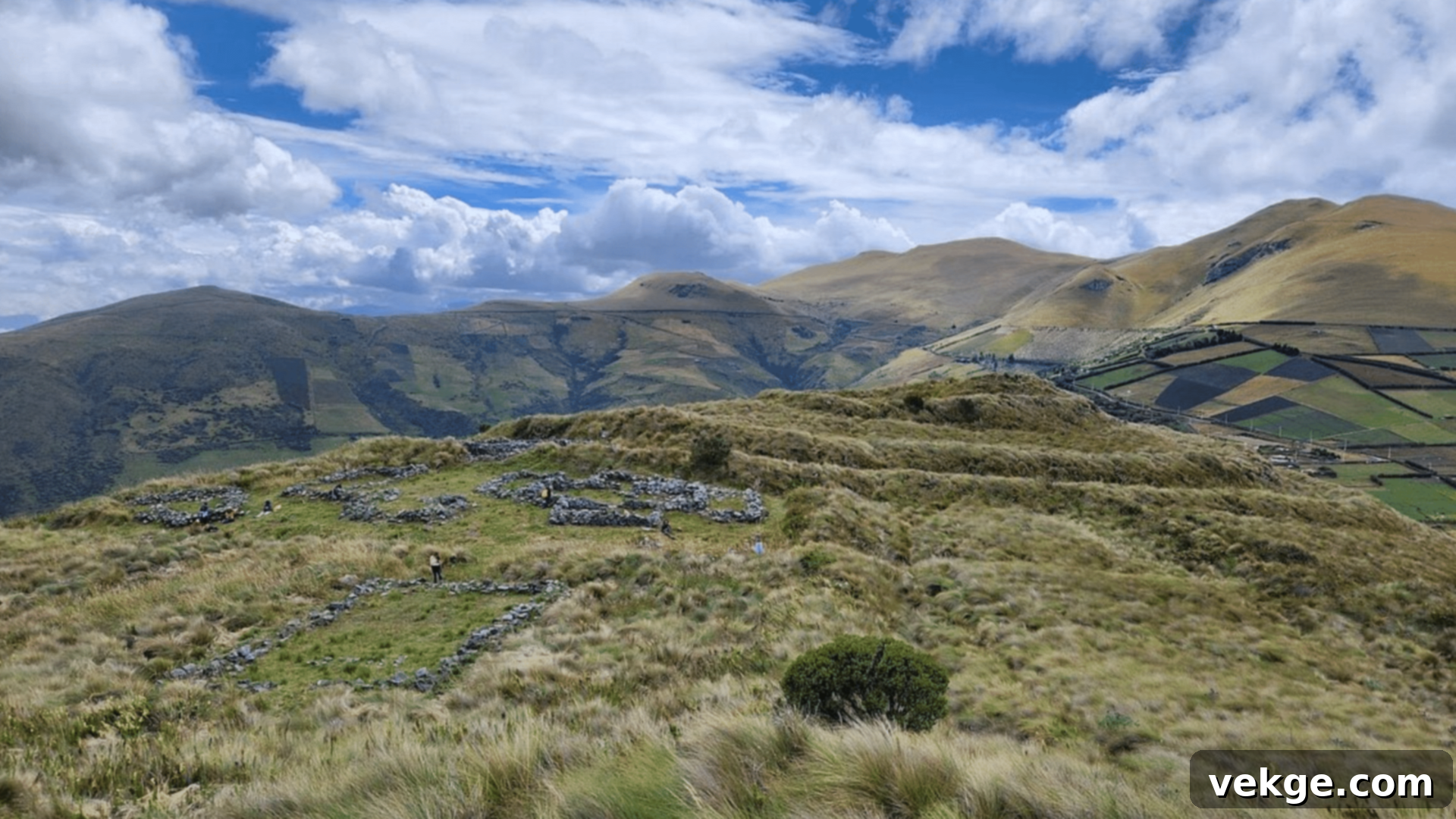
The Pambamarca Fortresses represent a historically significant group of hilltop military installations dating back to the formidable Inca Empire. Constructed in the 15th century atop an ancient, eroded volcano, these strategic fortresses were crucial for marking and defending the northern boundaries of the rapidly expanding Inca dominion in what is now Ecuador.
The extensive complex features numerous stone structures, with the largest site comprising more than 70 distinct stone buildings, including watchtowers, barracks, and ceremonial platforms. These fortifications provided vantage points and defensive strongholds against local indigenous groups resisting Inca expansion.
Why Visit: Step back in time and explore these remarkably well-preserved ancient military sites, gaining a unique perspective on Inca military strategy and frontier life. The commanding views from these elevated positions also offer stunning panoramic vistas of the surrounding Andean landscape.
Interesting Fact: The Pambamarca Fortresses were not merely administrative outposts; they were active battlegrounds. These sites witnessed numerous fierce and bloody conflicts throughout the 15th and early 16th centuries as the Inca Empire struggled to consolidate its control over the northern territories, making them places of profound historical drama.
18. Yaku Parque Museo del Agua
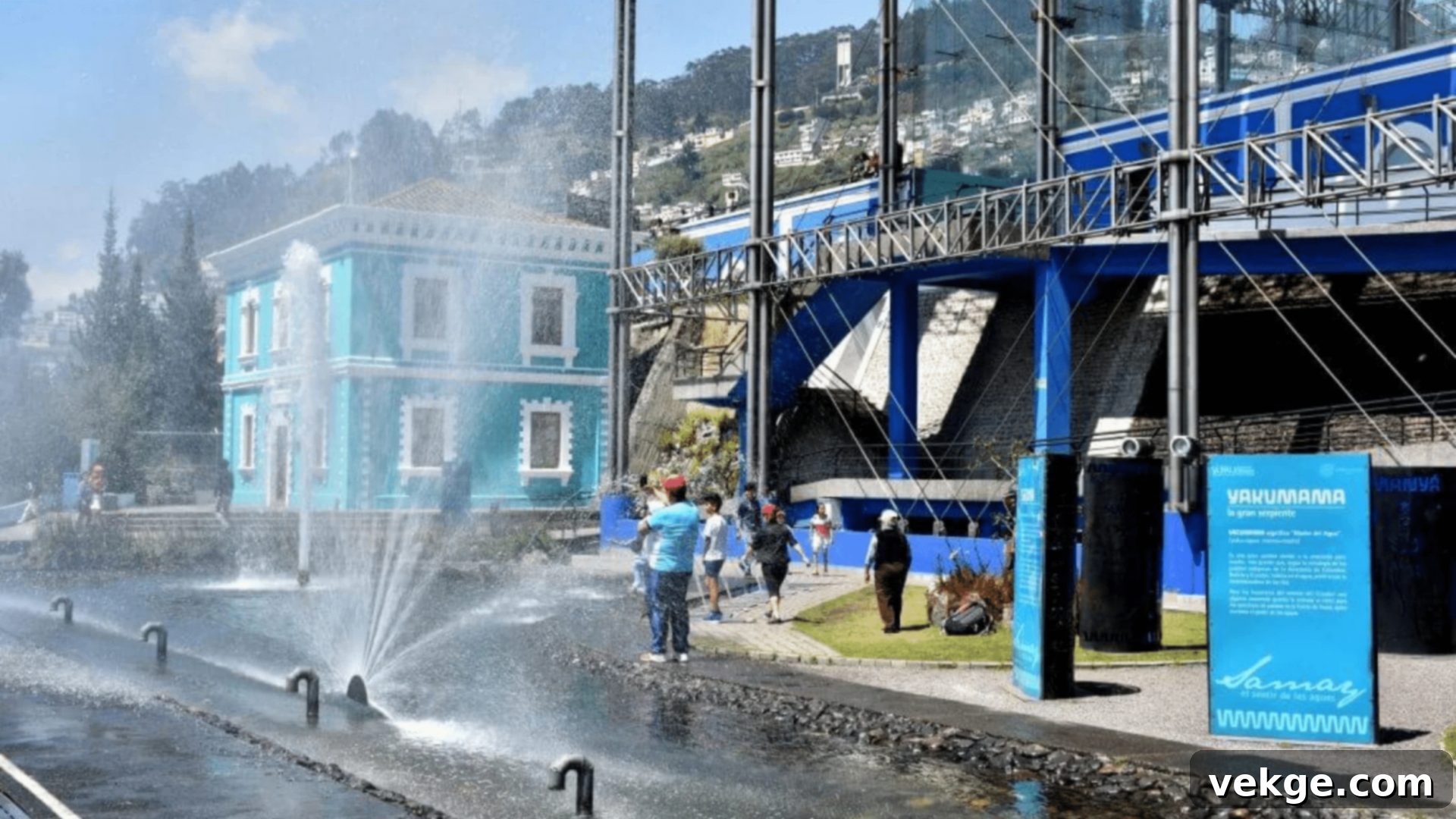
The Yaku Parque Museo del Agua, or “Water Museum Park,” is an innovative and interactive museum located in Quito, offering a unique perspective on the critical importance of water. Situated on the slopes of the Pichincha volcano, the museum occupies the former facilities of the city’s first potable water treatment plant, providing a fascinating blend of history, science, and environmental awareness.
Through engaging exhibits, interactive displays, and beautiful gardens, Yaku educates visitors about the water cycle, its significance to human life and the environment, and the history of water management in Quito. It emphasizes the need for responsible water consumption and conservation.
Why Visit: Engage with captivating exhibits that promote environmental awareness and explore the vital role of water in our lives. The museum’s elevated location also provides splendid panoramic views of Quito’s historic center and the surrounding Andean mountains.
Interesting Fact: The museum’s name “Yaku” comes from the Kichwa word for water, reflecting its deep connection to indigenous cultures and their profound respect for this essential natural resource. It effectively bridges scientific understanding with cultural heritage.
19. La Tolita

La Tolita, an island situated at the mouth of the Santiago River in Ecuador’s Esmeraldas province, is a site of immense archaeological importance, representing one of the most sophisticated pre-Columbian cultures in South America. It was the heartland of the ancient Tolita culture, which flourished from approximately 600 BC to 250 AD.
The island served as a significant ceremonial and habitation site, yielding a wealth of archaeological finds. Excavations have uncovered exquisite pottery, intricate gold offerings, and compelling evidence that its inhabitants were master metallurgists, uniquely working with not only gold and silver but also the challenging precious metal, platinum – an astounding feat for their time.
Why Visit: Delve into a pivotal historical site where you can witness artifacts and remnants of an advanced ancient civilization displayed in their original context. It offers a fascinating glimpse into the complex artistry and technological innovations of the Tolita people.
Interesting Fact: The island’s name, “La Tolita,” is derived from the term “tola,” which refers to the small gold-washing pans used by the ancient inhabitants. This name serves as a direct link to the region’s rich history of early gold mining and sophisticated metalworking.
20. Basilica del Voto Nacional
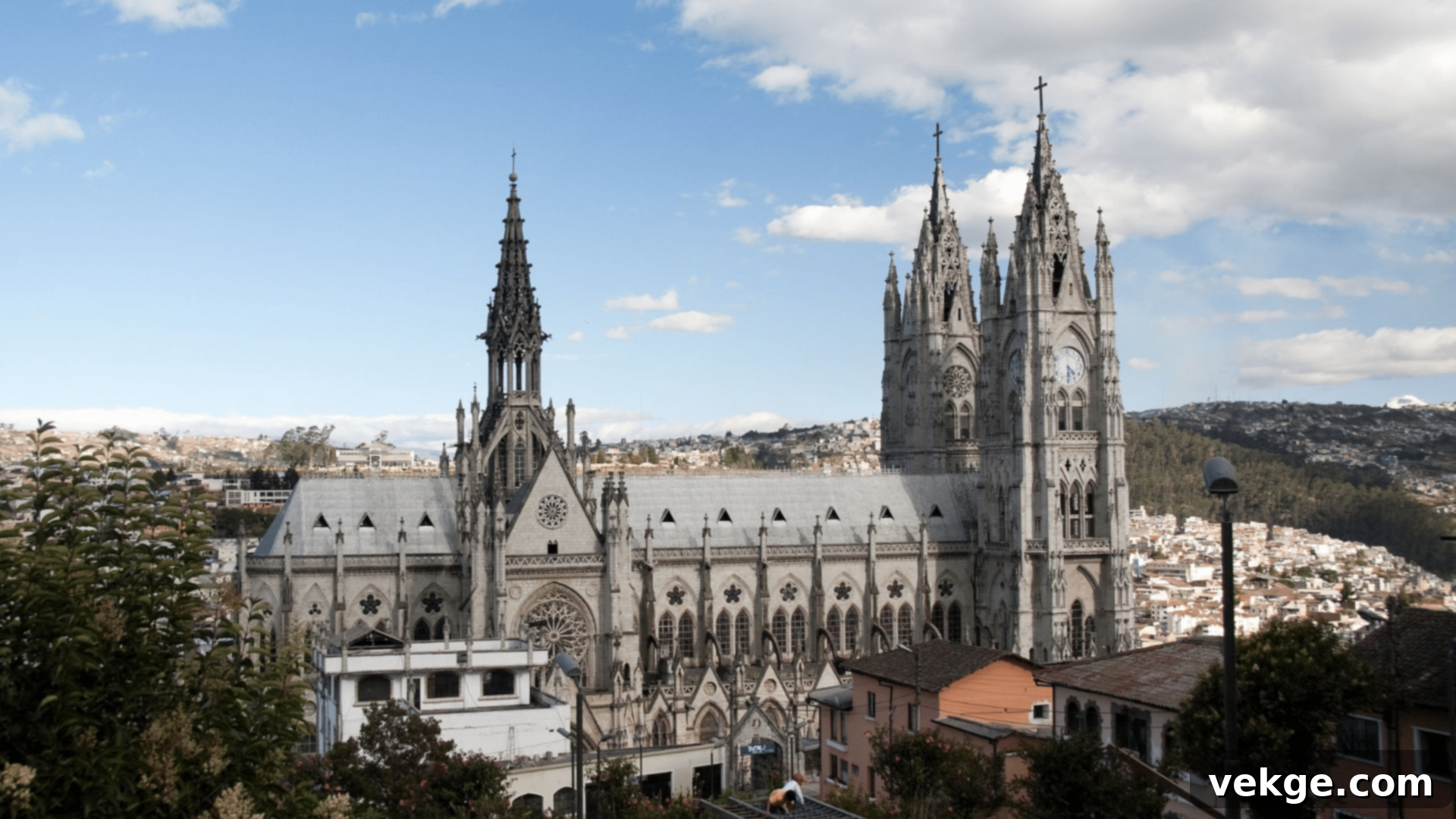
The Basilica del Voto Nacional, majestically overlooking Quito’s historic center, is an architectural marvel and proudly holds the title of the largest neo-Gothic basilica in South America. Its construction commenced in 1892, with the ambitious goal of creating a national monument dedicated to the consecration of Ecuador to the Sacred Heart of Jesus.
This towering edifice is distinguished by its unique and delightful departure from traditional Gothic ornamentation: instead of fearsome gargoyles, its exterior is adorned with an array of indigenous Ecuadorian fauna, including turtles, armadillos, iguanas, and various birds. Its impressive towers soar to a height of 115 meters (377 feet), making it a prominent feature of Quito’s skyline.
Why Visit: Ascend the basilica’s lofty towers for unparalleled, breathtaking panoramic views of Quito, its historic Old Town, and the dramatic surrounding Andean peaks. While doing so, marvel at the whimsical and culturally rich animal decorations that make this cathedral truly one-of-a-kind.
Interesting Fact: Much like Cuenca’s Catedral Nueva, a popular local legend associated with the Basilica del Voto Nacional claims that if its construction is ever fully completed, the world will face its ultimate end. This folklore adds an intriguing layer of mystique to this already magnificent and historically significant structure.
21. Santa Cruz Fish Market

The Santa Cruz Fish Market, nestled in the bustling port town of Puerto Ayora on Galápagos’ Santa Cruz Island, isn’t just a place to buy fresh seafood; it’s an extraordinary daily wildlife spectacle. What begins as a typical local market quickly transforms into a vibrant theatre of nature, showcasing the unique cohabitation between humans and animals in the Galápagos.
Here, local fishermen clean their catch, and the resulting scraps attract a fascinating array of wild visitors. Playful sea lions, majestic pelicans, and even opportunistic frigatebirds regularly gather, creating a lively and often humorous scene as they patiently, or sometimes impatiently, wait for or compete over fish leftovers.
Why Visit: Witness one of the most endearing and accessible examples of Galápagos wildlife interaction. Observe the amusing antics and bold personalities of wild animals as they engage in a daily ritual of begging and playfully competing for food, offering a memorable, up-close encounter without needing to leave the town.
Interesting Fact: It’s not uncommon for both locals and tourists to spend considerable time, often hours, simply sitting and observing this captivating interplay. The market provides a unique, unscripted glimpse into the relaxed and fearless nature of Galápagos wildlife, where boundaries between human and animal realms beautifully blur.
22. Muro de las Lagrimas (Wall of Tears)
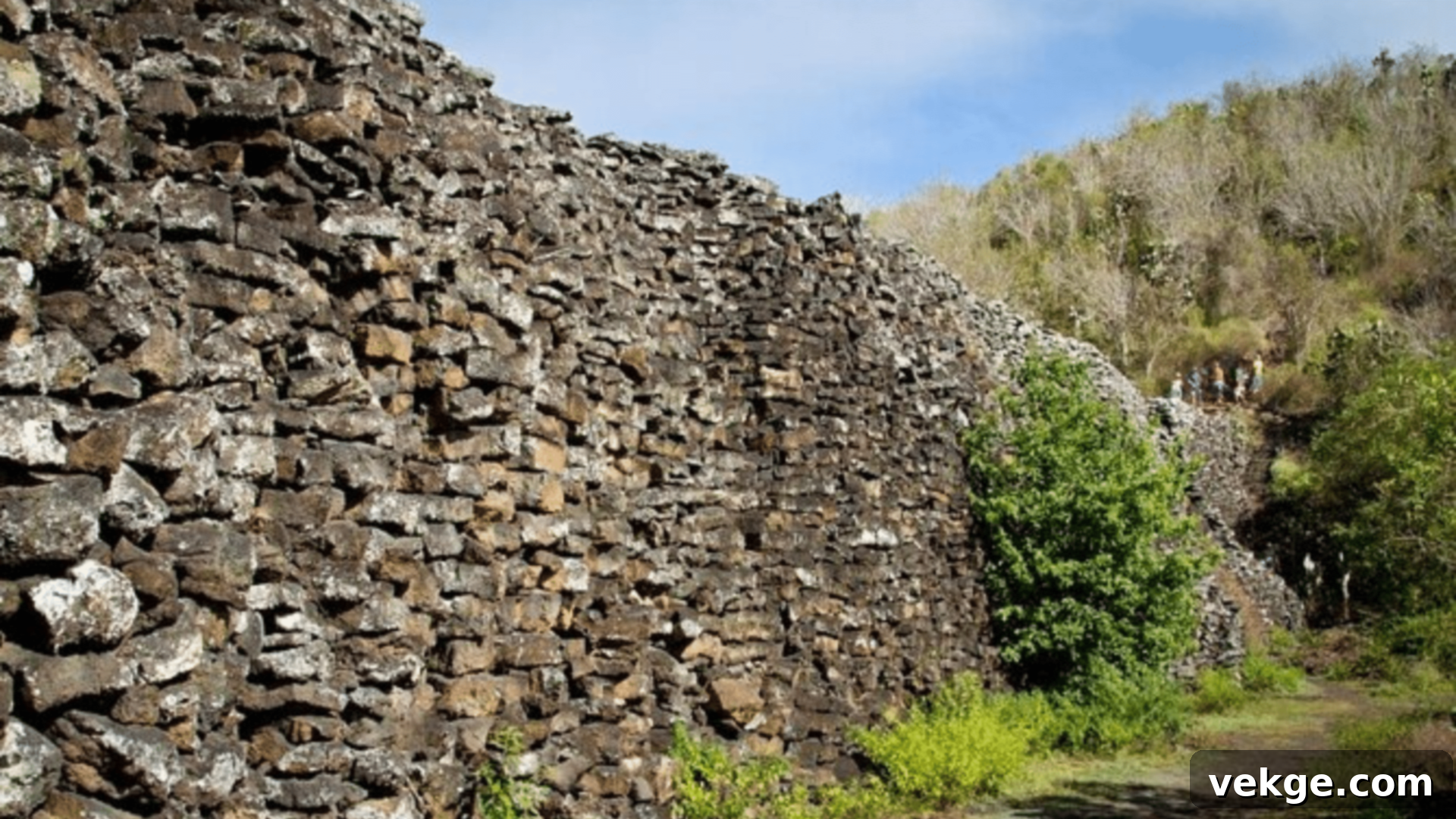
The Muro de las Lágrimas, or “Wall of Tears,” located on Isabela Island in the Galápagos, is a poignant and stark historical monument. This immense, somber wall was tragically constructed between 1945 and 1959 by prisoners of a penal colony established on the island. The colony, a harsh chapter in the islands’ history, was eventually closed due to its brutal conditions.
Standing approximately 25 meters (82 feet) tall and stretching for hundreds of meters, the wall is painstakingly built from heavy, unforgiving lava rock, without the aid of modern machinery. The labor was incredibly arduous, undertaken under extreme conditions, and many prisoners perished during its construction. Though never fully completed, it remains a powerful and haunting testament to human suffering, forced labor, and indomitable persistence.
Why Visit: Reflect on a significant, darker chapter of Galápagos history by visiting this monument to human suffering and endurance. It offers a sobering contrast to the islands’ natural beauty, providing a deeper historical context to your visit.
Interesting Fact: Local lore suggests that the Wall of Tears sometimes emits crying sounds. While this atmospheric phenomenon is likely caused by the wind whistling through the numerous cracks and crevices in the lava stones, it adds a chilling and evocative layer to the monument’s already profound sense of sorrow and history.
23. Plaza de las Flores
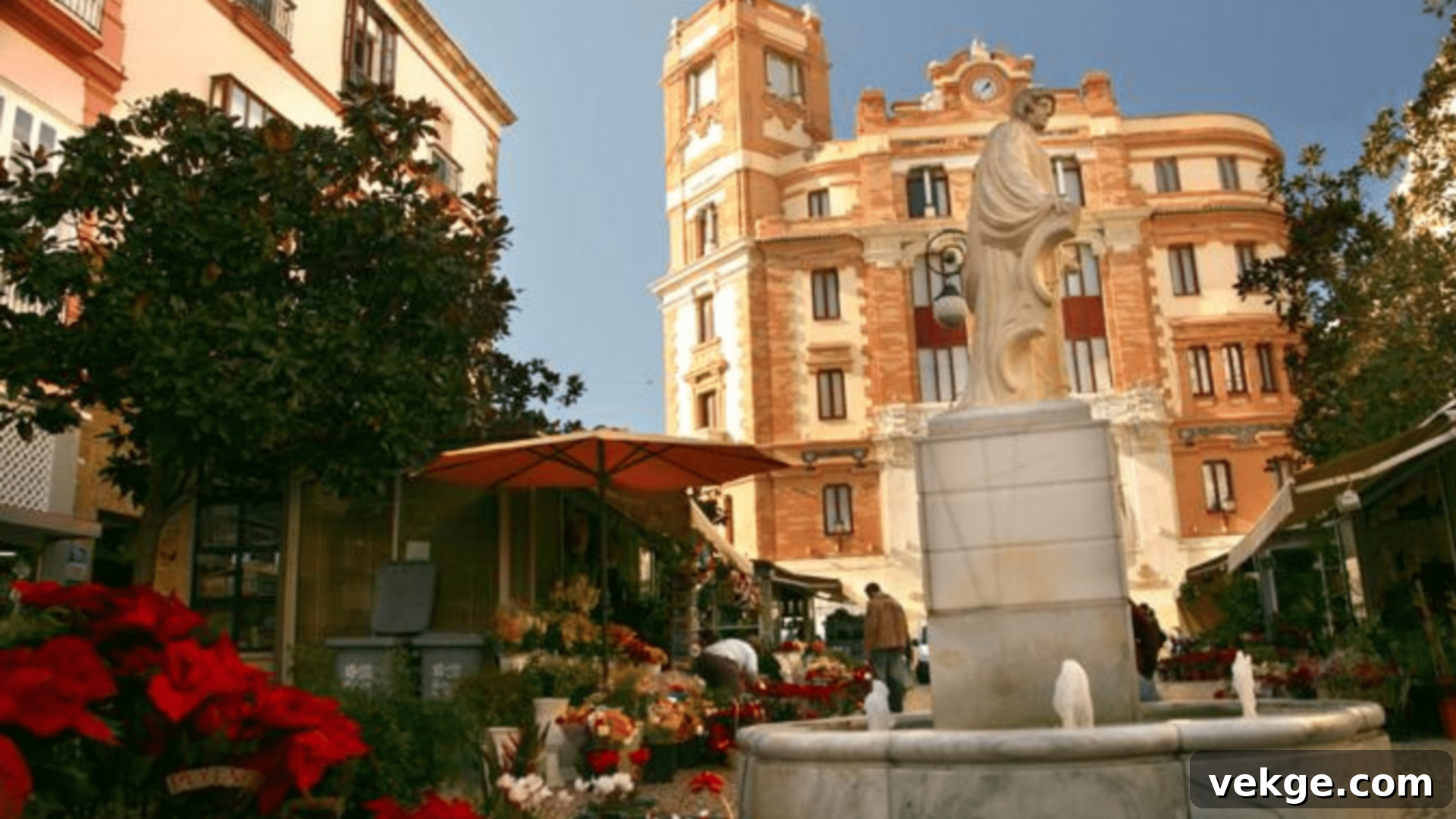
The Plaza de las Flores, or “Flower Square,” in Cuenca, is a vibrant and enchanting market that is often cited as one of the most beautiful and picturesque spots in the city’s historic center. Located beside the Catedral Vieja (Old Cathedral), it’s a sensory delight, bursting with color and fragrant aromas.
Every day, the square comes alive with numerous vendors, many dressed in traditional attire, selling an astonishing variety of fresh cut flowers, from roses and lilies to exotic local blooms. The market is renowned for its welcoming, friendly atmosphere and the captivating sweet scents that permeate the air, creating a truly delightful experience for all who visit.
Why Visit: Immerse yourself in a quintessential aspect of local Ecuadorian culture, observe the charming traditional clothing worn by the vendors, and revel in the sheer beauty and intoxicating fragrance of thousands of fresh flowers. It’s a perfect spot for photography and experiencing Cuenca’s lively spirit.
Interesting Fact: Thanks to Ecuador’s ideal climate for floriculture, the Plaza de las Flores offers incredibly low prices for its stunning blooms, making it a beloved daily stop for both local residents purchasing flowers for their homes and churches, as well as an unforgettable, budget-friendly attraction for tourists.
The Natural Beauty of Ecuador
Ecuador’s natural beauty is nothing short of extraordinary, presenting a breathtaking diversity of landscapes that is truly unparalleled for a country of its size. This remarkable nation is geographically segmented into four distinct regions, each boasting its own unique ecosystems and stunning scenery, making it a microcosm of the planet’s ecological wonders.
The majestic Andes mountains dramatically cleave through the country’s center, creating the “Sierra” region. Here, visitors are treated to cool, high-altitude landscapes dotted with awe-inspiring active volcanoes, shimmering crater lakes like Laguna Quilotoa, and fertile valleys. These highlands offer a playground for hikers, mountaineers, and those seeking cooler climes and spectacular views.
To the east, the “Oriente” or Amazon region unfolds into a vast expanse of incredibly dense rainforest, teeming with an astonishing array of flora and fauna. This biodiverse wilderness is home to countless species of monkeys, vibrant birds, elusive jaguars, and a rich tapestry of indigenous cultures, offering profound opportunities for ecological exploration and cultural immersion.
On Ecuador’s western flank lies the “Costa” or coastal plains, leading to the warm waters of the Pacific Ocean. This region boasts pristine beaches, vibrant mangrove ecosystems, and a rich marine life, providing a perfect contrast to the cooler highlands and humid Amazon. Further offshore, the legendary Galápagos Islands, a UNESCO World Heritage site, represent a unique oceanic ecosystem, famed for its endemic species and pivotal role in evolutionary biology.
A robust network of national parks and protected areas, such as Cotopaxi National Park and Galápagos National Park, plays a crucial role in safeguarding these invaluable natural treasures. These dedicated conservation efforts ensure that Ecuador’s pristine environments and unique animal species remain protected, allowing present and future generations to witness nature in its purest, most untouched form.
Ecuador’s astonishing biodiversity, encompassing a staggering mix of plants and animals, truly makes it a dream destination for nature enthusiasts and wildlife photographers. The country boasts a higher concentration of bird species per square mile than any other nation in South America, making it a prime destination for birdwatching.
From the delicate beauty of tiny hummingbirds flitting through the misty cloud forests to the ancient grandeur of giant tortoises slowly traversing the Galápagos, the sheer range and accessibility of wildlife experiences in a single trip solidify Ecuador’s status as a standout among global travel destinations. It promises not just a trip, but an immersive journey into the heart of natural wonder.
Conclusion
We trust that this comprehensive guide to Ecuador’s remarkable landmarks has vividly illustrated why this vibrant country is truly a special and unforgettable destination. Ecuador’s unique charm lies in its extraordinary ability to pack an astonishing array of experiences into a relatively compact geographical area, promising adventures that cater to every interest.
From the unparalleled, endemic wildlife of the Galápagos Islands, where you can walk alongside creatures found nowhere else, to the enduring mysteries of ancient Inca ruins that whisper tales of bygone empires, and the architectural splendor of colonial churches echoing centuries of faith, Ecuador seamlessly blends natural majesty with profound human history. Add to this the dramatic landscapes of stunning volcanoes and serene crater lakes, and you have a destination that continuously captivates.
Each of these featured landmarks offers more than just a sight; they provide a deep immersion into the heart of what makes Ecuador so compelling. They collectively offer a rich tapestry of experiences: from breathtaking natural wonders and a profound, layered history to a dynamic and vibrant culture that greets visitors with warmth and authenticity.
Ecuador stands out not just in South America, but on the global stage, for very compelling reasons. It is a land of vivid contrasts and incredible accessibility – a place where you can find yourself snorkeling playfully with sea lions in the warm Pacific waters in the morning, and by the afternoon, standing symbolically with one foot in each hemisphere at the “Middle of the World.” Such diverse experiences within a single day are a testament to its unique allure.
We encourage you to embark on your own Ecuadorian adventure and discover these wonders firsthand. If you’re seeking further travel inspiration and insights into other incredible destinations, be sure to explore our other blogs for more captivating content designed to fuel your wanderlust!
